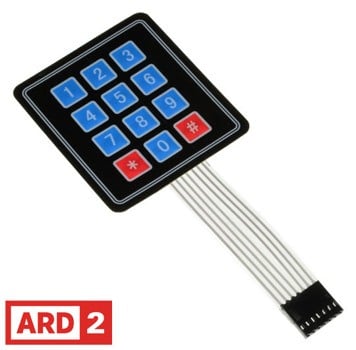The Role of Membrane Switch Technology in Improving Product Interfaces
The Role of Membrane Switch Technology in Improving Product Interfaces
Blog Article
Understanding Membrane Switches: The Key to Trusted and durable Controls
Membrane layer switches represent a critical facet of modern interface layout, blending performance with strength in various applications. As we discover the ins and outs of membrane buttons, it becomes clear that their duty in improving control systems is both complex and profound, elevating questions about exactly how ideal to utilize their capabilities in future developments.
What Are Membrane Layer Buttons?
Membrane layer buttons are a sophisticated service in the realm of individual interface modern technology, incorporating functionality and design effortlessly. These tools function as an interface between individuals and digital systems, integrating a number of parts into a portable layout. Typically created from flexible, slim layers of products, membrane buttons are designed to react to touch, enabling users to communicate with machinery and electronic tools effectively.
The key components of a membrane switch consist of a published circuit layer, visuals overlay, and a spacer layer that stops unexpected activation. The graphic overlay can be customized to reflect brand name identification or individual preferences, improving aesthetics while ensuring use. Membrane layer switches are commonly made use of in numerous applications, including medical tools, consumer electronic devices, and industrial tools, owing to their longevity and resistance to ecological elements such as moisture and dirt.
One of the key benefits of membrane buttons is their capability to stand up to wear and tear, making them excellent for high-traffic settings. Furthermore, they are lightweight and call for minimal room, enabling innovative layouts in product growth. In general, membrane switches represent a sensible and effective choice for contemporary digital interfaces, weding innovation with user-centric layout principles.

How Membrane Switches Over Job
The operation of membrane switches over depend upon a basic yet efficient mechanism that translates customer input into electronic signals. These buttons include several layers, normally including a graphic overlay, a spacer layer, and a circuit layer. When a user presses the button, the top layer deforms, allowing a conductive element in the circuit layer to make call with a corresponding conductive pad on the bottom of the graphic overlay. This get in touch with shuts the circuit and sends an electronic signal to the device, indicating that the switch has been turned on.
The design of membrane layer buttons can vary, however they commonly incorporate domes or responsive components to offer responses to the user, enhancing the general experience. The products used in membrane layer buttons, such as polyester or polycarbonate, add to their toughness and resistance to environmental aspects, consisting of moisture and dirt. Furthermore, the printed circuits are commonly encapsulated, which secures them from damage in time.

Benefits of Membrane Layer Switches
Among the main advantages of membrane layer buttons is their adaptability in design, permitting them to be customized to fulfill particular customer requirements and aesthetic demands. This adaptability expands to various markets, where various shapes, dimensions, and colors can be utilized to boost user communication and aesthetic allure.
Furthermore, membrane switches are recognized for their sturdiness. Created from robust materials, they are immune to dirt, moisture, and physical wear, which dramatically extends go to website their life expectancy contrasted to traditional mechanical buttons. This longevity makes them particularly appropriate for high-traffic atmospheres and applications needing long life.

Furthermore, membrane layer switches supply a streamlined account, resulting in a thinner style that can be incorporated into numerous devices without adding mass. This feature not only boosts the aesthetic charm but likewise adds to a more ergonomic product layout.

Applications of Membrane Layer Switches
Flexible site link and straightforward, membrane switches discover applications throughout a large range of markets, consisting of clinical devices, consumer electronics, and commercial tools. In the clinical area, these buttons are integral to gadgets such as diagnostic devices, person monitoring systems, and mixture pumps, where reliability and ease of cleaning are important. Their capacity to preserve and endure extreme atmospheres performance makes them excellent for such applications.
In customer electronics, membrane layer buttons are utilized in products like microwaves, washing devices, and push-button controls - membrane switch. Their smooth style enables intuitive interface, enhancing the overall user experience while providing resilience and resistance to wear and tear
Commercial tools additionally takes advantage of membrane switches, particularly in control panels for equipment and automation systems. These buttons use security against dust and dampness, making certain regular efficiency in challenging environments. Their customizable attributes enable producers to customize them to certain operational needs, boosting effectiveness and functionality.
Selecting the Right Membrane Switch Over
When choosing a membrane layer switch, it is necessary to think about numerous aspects that affect performance and viability for details applications. The main factors to consider include environmental problems, responsive feedback, longevity, and design requirements.
First, assess the operating Look At This atmosphere; buttons exposed to wetness, chemicals, or severe temperatures need specific materials to make certain durability and performance. Next off, assess the demand for responsive comments. Relying on customer interaction, some applications might profit from a tactile response to confirm activation, while others may favor a non-tactile design for aesthetic reasons.
Sturdiness is an additional crucial element; membrane switches must be made to hold up against frequent use, impacts, and abrasion. Guarantee the chosen switch can withstand the expected lifecycle, specifically in high-usage scenarios.
Verdict
In conclusion, membrane switches serve as vital elements in the style of long lasting and trustworthy control systems throughout numerous sectors. The adaptability of membrane switches allows for customized remedies that satisfy details functional requirements, reinforcing their significance in modern-day technology.
Membrane layer changes stand for an important aspect of modern-day interface style, mixing performance with strength in various applications.Membrane layer buttons are a sophisticated option in the realm of individual interface modern technology, integrating capability and design flawlessly. Usually created from versatile, slim layers of materials, membrane layer switches are created to react to touch, allowing users to engage with equipment and electronic gadgets effectively.
The layout of membrane switches can differ, however they usually incorporate domes or responsive aspects to offer comments to the customer, boosting the overall experience.In final thought, membrane switches serve as vital parts in the layout of resilient and trustworthy control systems across various industries.
Report this page